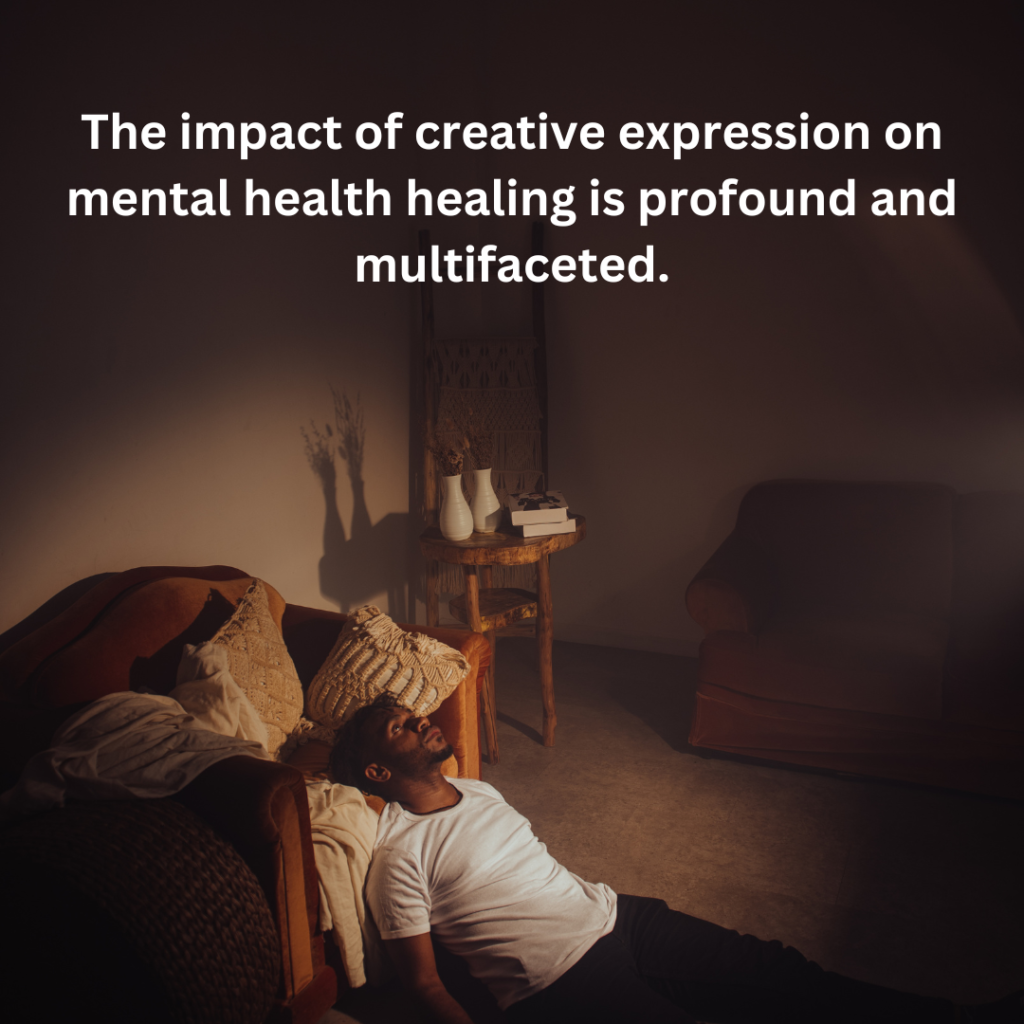
Creative expression plays a pivotal role in mental health healing, offering a unique and powerful means of communication and self-discovery. This article explores how engaging in creative activities such as painting, writing, music, and dance can significantly enhance mental well-being, providing therapeutic benefits that traditional approaches might not offer.
The Therapeutic Power of Art
Art therapy has been recognized for its ability to help individuals process emotions, reduce stress, and improve self-esteem. Creating art allows people to express feelings they might find difficult to articulate verbally. For example, painting or drawing can serve as a non-verbal outlet for emotions, enabling individuals to convey their experiences and struggles visually. This process can be incredibly cathartic, providing a sense of relief and clarity.
Writing for Mental Health
Writing, whether through journaling, poetry, or storytelling, is another powerful tool for mental health healing. It allows individuals to explore their thoughts and feelings in a structured manner. Journaling, in particular, has been shown to reduce symptoms of depression and anxiety by providing a safe space for self-reflection. Writing helps individuals make sense of their experiences, identify patterns in their thoughts and behaviors, and develop coping strategies.
The Healing Rhythms of Music
Music therapy leverages the emotional and psychological impact of music to promote healing. Listening to or creating music can reduce stress, alleviate pain, and enhance mood. For many, music provides a sense of comfort and connection, evoking memories and emotions that can be processed in a therapeutic context. Playing an instrument or singing can also serve as a form of emotional expression, helping individuals release pent-up feelings and achieve a sense of inner harmony.
Movement and Dance
Dance and movement therapy integrates physical movement with emotional and psychological processes. Through dance, individuals can express themselves freely and connect with their bodies in a positive way. This form of therapy helps release tension, improve body image, and foster a sense of community and support. The rhythmic and repetitive nature of dance can be particularly grounding, helping individuals stay present and focused.
Benefits Beyond Traditional Therapy
Creative expression complements traditional therapy by providing alternative avenues for healing. It encourages individuals to tap into their creativity and imagination, fostering a sense of empowerment and agency. Engaging in creative activities can also build resilience, improve problem-solving skills, and enhance overall quality of life.
Personal Stories and Successes
Many people have found solace and healing through creative expression. Personal stories of individuals who have used art, writing, music, or dance to navigate their mental health challenges highlight the transformative power of creativity. These stories serve as inspiration and validation for others, demonstrating that creative expression can be a vital part of the healing journey.
The impact of creative expression on mental health healing is profound and multifaceted. By providing alternative methods for self-expression and emotional processing, creative activities such as art, writing, music, and dance can significantly enhance mental well-being. These forms of expression offer therapeutic benefits that complement traditional approaches, fostering a holistic approach to mental health care. Whether as a standalone practice or in conjunction with other treatments, creative expression holds the potential to unlock new pathways to healing and recovery.